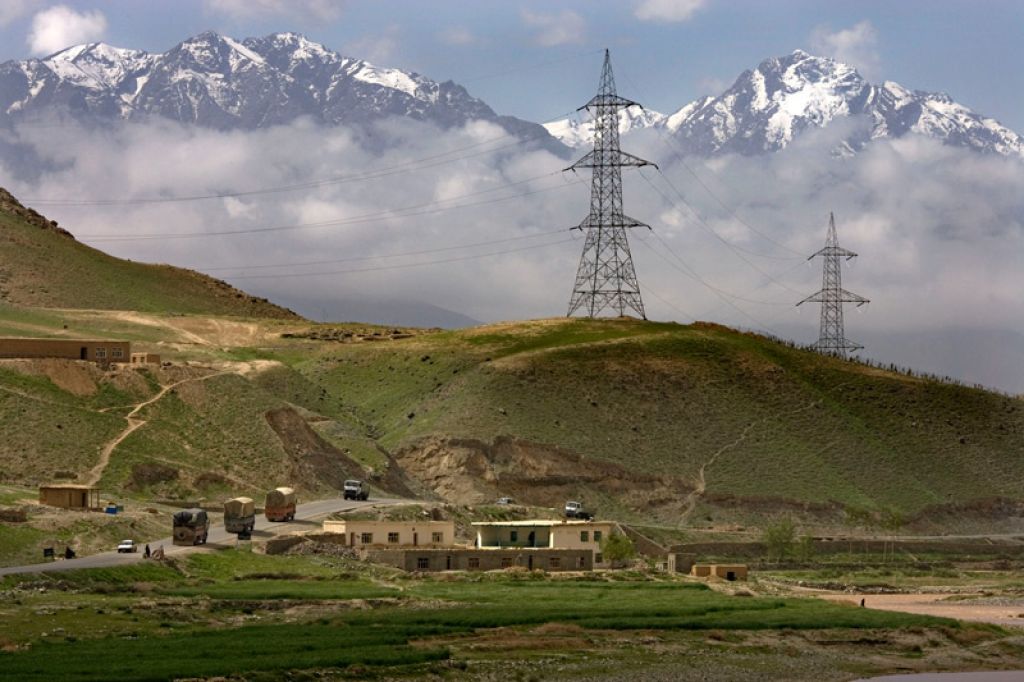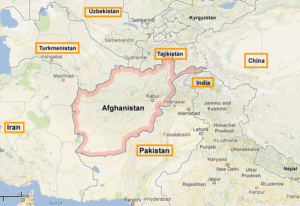Afghanistan is a country that has long struggled with significant economic challenges. Despite the efforts of numerous international donors and countries aimed at revitalizing its economy, several critical imbalances persist. These imbalances have stunted growth and hindered development, leaving the Afghan population vulnerable. This article aims to analyze four major imbalances in Afghanistan’s economy.
1-Budget Deficit
The budget deficit in Afghanistan has become a pressing issue, particularly following the Taliban’s takeover in 2021. A budget deficit occurs when a government’s expenditures exceed its revenues, resulting in a shortfall that must be financed through borrowing or other means. The chart shows the budget deficit of Afghanistan in billions of Afghanis (Afs) from 2018 to 2023. The deficit increased significantly from 6.1 billion Afs in 2018 to 64.4 billion Afs in 2023.
When a budget deficit occurs, the government often attempts to address the financial imbalance by reducing or eliminating certain expenditures. This response is aimed at balancing the budget and ensuring the sustainability of government operations. According to Afghanistan Development Update, for fiscal year 2022, public sector spending was limited to own-source revenue and recorded at AFN 195.2 billion. This represented a significant decrease from AFN 424.3 billion in 2019. However, such measures can have significant repercussions for the overall welfare of the population and the functioning of key services. For example:
Cuts to Essential Services:
One of the immediate impacts of reducing expenditures is a decrease in funding for essential services like healthcare, education, and public safety. As the government reallocates resources to cover the deficit, vital projects may face budget cuts, leading to diminished access and quality of services for citizens. According to Afghanistan Development Update, Health expenditure was one of the most severely affected areas due to a significant overall reduction in spending. In 2019, the Department of Health allocated AFN 20.3 billion, which represented 5 percent of total expenditures. However, by 2022, this amount plummeted by 90 percent to just AFN 2 billion, making up only 1 percent of total public spending that year.
Social Welfare Programs:
Programs designed to support vulnerable populations, including women, children, and the elderly, may face significant funding cuts. This can lead to increased hardship for those who depend on these services for basic needs, such as food, shelter, and medical care. For instance, retirees are particularly affected by these cuts. Many former government employees, who depend on pensions as their primary source of income, find themselves in crisis. (where are my rights?, issued on 22 May 2024, can be read here). In addition, the Taliban reduced the salaries of female public servants confined to their homes to 5,000 AFN( $70). (what can you do with 5000 Afghanis?, issued on 29 Jul 2024, can be read here).
2- Imbalance in the Job Market
According to the National Statistics and Information Authority (NSIA), Afghanistan's population is approximately 35 million. The current population growth rate is estimated at 2.14% per year. Recent data from the World Bank highlights that around 400,000 individuals enter the Afghan labor market annually; however, nearly half of these individuals remain unemployed. The relationship between job creation and economic growth is crucial. The Research indicates that for every 1% increase in Gross Domestic Product (GDP), total employment typically rises by approximately 0.3 to 0.38 percentage points. In developing countries, the employment elasticity of GDP growth is often around 0.7, meaning that a 1% increase in GDP could lead to a 0.7% increase in employment opportunities. According to World Bank, unfortunately, Afghanistan has faced significant economic challenges in recent years, with negative growth rates recorded at -2.3% in 2020, -20.7% in 2021, and -6.7% in 2022 and there was a modest recovery with a growth rate of 2.7% in 2023.
The latest estimates from the World Bank indicate that approximately 400,000 individuals enter the job market annually, with at least half of them remaining unemployed. In addition to the accumulated labor force over the years, the current population growth is estimated to result in at least one million new entrants to the job market annually over the next decade. The impact of imbalance in the labor or job market on people's welfare can be significant and multifaceted.
Unemployment rate:
One consequence of an imbalance in the job market is a rising unemployment rate. The Income and Expenditure-Labor Force report noted that the poverty rate was 47.1 percent in Afghanistan in 2020. The Afghan job market is characterized by a significant gender imbalance, which further limits opportunities for women and deepens existing societal divisions. Since 2021, discrimination against women has intensified, as evidenced by prohibitions on women's employment in non-governmental organizations (NGOs) and a marked decline in female representation in the public sector—from 108,000 in 2020 to only 88,000 in 2023. Additionally, the number of companies without any female employees has increased by approximately 50%.
Poverty Expansion
High imbalances in job markets lead to financial instability, making it difficult for individuals and families to meet basic needs such as food, housing, and healthcare. According to UNDP estimates, about 85% of Afghanistan's population lives on less than one dollar per day, which places them below the poverty line. Almost 80% of those in need in Afghanistan are women and children.
Reduced Consumer Spending
Higher unemployment leads to fewer people earning wages, which results in decreased overall consumer spending. According to the World Bank, this lack of purchasing power has led to a dramatic drop in demand for goods and services, with small and medium-sized enterprises reporting an 80 percent decline in sales and larger companies experiencing a 69 percent decrease. The decrease in consumer demand significantly impacts private sector activity, accounting for approximately 30% of its reduction, thereby hindering efforts to alleviate poverty.
3-Trade Deficit
One of the most pressing concerns associated with the trade deficit is its detrimental effect on the domestic economy. The appreciated Afghan currency (AFN) further complicates this situation by dampening exports while increasing imports, which weakens the struggling domestic industry. The widening trade deficit in Afghanistan signals a concerning trend for developing countries, as it risks driving domestic industries out of the market and leading to rising unemployment and social problems that threaten societal stability. If local products remain unsupported and unable to compete, the trade balance will continue to deteriorate, potentially turning Afghanistan into a permanent importer. This inability to leverage existing resources not only jeopardizes economic health but also undermines long-term development prospects.
Despite these challenges, there are some positive aspects to consider. The trade deficit allows consumers access to a wider variety of goods than what domestic production can offer. This is particularly beneficial for individuals seeking high-quality products that may not be manufactured locally. For instance, the increased imports of industrial raw materials, such as chemicals and iron, can support certain sectors, contributing to the overall economy (Causes of Deficit in Trade Balance and Its Effects on the Economy of Afghanistan, issued in Feb 2021, can be read here). Additionally, The strong imports allowed the Taliban to hit its revenue targets, thanks to increased import taxes and non-tax revenue, despite stagnant export levels. According to the NSIA, the revenue from international trade taxes for the Taliban was AFN 63.7 billion in 2023, accounting for nearly 30% of total domestic revenue. This revenue generation is crucial for funding public services and infrastructure, albeit actual spending remains below budget due to a lack of foreign grants or loans.
4-imbalance in electricity usage
Electricity is a good that adds massive value to modern life: from having light at night; to washing clothes; cooking meals; running machinery; or connecting with people across the world. Many would argue that it is crucial for poverty alleviation, economic growth, and improved living standards (Panos, E., Densing, M., Volkart, K. (2016). Access to electricity in the World Energy Council’s global energy scenarios: An outlook for developing regions until 2030. Energy Strategy Reviews, 9, 28-49. Available online).
Afghanistan's electricity landscape presents a critical challenge, as the country grapples with a widening gap between supply and demand. The data reveals a concerning trend – while electricity generation has remained relatively stable, consumption has steadily increased, leading to a growing deficit and widespread power outages that impact both residential and commercial sectors. One of the primary drivers of this crisis is Afghanistan's heavy reliance on imported electricity, which accounts for over 80% of its total supply. The country's landlocked geography and decades of conflict have hindered the development of a robust domestic energy infrastructure, leaving it vulnerable to disruptions and supply shortages from its Central Asian neighbors. This dependence has become even more precarious as these exporting countries face their own energy demands, often leading to reduced exports to Afghanistan during peak seasons or because of technical issues.
The consequences of this electricity shortage are far-reaching. For example, Kabul residents had electricity for only a few hours each day, with the least being one hour and the most being eight. For businesses and industries, the intermittent power supply has significantly hampered productivity, with 600 factories reporting output reductions of up to 60% due to the frequent blackouts. According to the World Bank, electricity is one of the top constraints faced by businesses. This not only affects domestic production but also undermines Afghanistan's competitiveness in the global market, as imported goods gradually replace locally manufactured products (Rising power outage in Kabul: A Growing Concern for Residents, can be read here)
The impact extends beyond the commercial realm, directly affecting the well-being of Afghan citizens. Hospitals and healthcare facilities, which rely on a steady power supply to maintain critical services, find themselves in a precarious situation, with the lives of patients hanging in the balance. (In Afghanistan’s battered healthcare system, power cuts can prove fatal, can be read here)
Conclusion
Afghanistan's economy faces a web of imbalances that have stifled growth and exacerbated hardship. The widening budget deficit has forced cuts to essential services, while the severe job market imbalance has driven up poverty. The persistent trade deficit undermines domestic industries, and the electricity shortage cripples businesses and disrupts critical services. Addressing these deep-seated imbalances requires a coordinated approach of fiscal reforms, job creation, trade diversification, and energy infrastructure investment. Only by tackling these fundamental challenges can Afghanistan break the cycle of instability and unlock its potential for sustainable development and improved human welfare.

